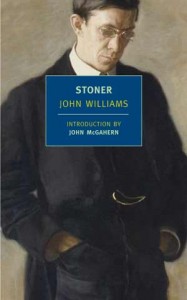Oil
The other day, one of my students asks me where oil comes from. I am helping him with an article about climate change and the oil industry that he was supposed to summarize for the previous week’s assignment. English is his third language and the one he struggles with the most, so we are sitting at his desk after dismissal going through his article line by line.
I’m surprised that he asks me that, where oil comes from, and then I’m ashamed at my own surprise. He has no reason to know the answer.
I could tell him that where I grew up, the drumbeats of the oil rigs were as familiar as the sound of my own heartbeat, or that my first school had an oil derrick next to the swing set, caged in with a barbed wire-topped fence and locked with heavy chains. READ MORE >
I am presenting the concept of creative nonfiction to intro writing students tomorrow. They will write their first exercise. Should I tell them to use qualifiers–“Perhaps, my mother said…” “As I remember it…”–or should I tell them to respect the reader: the contemporary reader obviously understands that CNF is flawed memory using flawed words.
Book-o-the-Day: Stoner by John Williams
 Ah, the university novel. You know them, lined on the shelf in luxurious elbows: Lucky Jim, Straight Man, Death in a Tenured Position, Wonder Boys, I Am Charlotte Simmons, The Gaudy Night, etc. (I am sure you can name many others–go right ahead.)
Ah, the university novel. You know them, lined on the shelf in luxurious elbows: Lucky Jim, Straight Man, Death in a Tenured Position, Wonder Boys, I Am Charlotte Simmons, The Gaudy Night, etc. (I am sure you can name many others–go right ahead.)
We get the usual ideas of the Ivy Tower, layer after constructed layer, grazing grey skies of tile, the empty smiles (can I get a motion? I second that motion!), dusty classroom to cramped office to bewildering department meeting of the bewildered, a city made of suffering elephants, a Matryoshka doll (stop that metaphor!) of sad absurdity. (Here I am addressing English Departments, as do most of these novels. Makes sense, I suppose: Write what you know, and for many writers, the U is nursemaid, benefactor, sad (or happy?) reprieve.
Sad X 2 above, as device, for emphasis. Sad is the one cloistered within, wrapped in gauze and weak coffee, kept from the wobbles and needles and very real pains of the Real World, to fade, fade away…into self-laugh, self-hate, into nothingness.
But Stoner is not like these other novels (at least not the ones I have read).
December 24th, 2009 / 10:00 pm
ISO SYLLABUS SUGGESTIONS: In past semesters, I’ve mostly taught conventional short stories to my conservative, non-English major Intro Lit students, thinking they’d be turned off by raw/experimental/genre-bending stuff. But I just taught “Cat N’ Mouse” by Steven Millhauser, and they loved it the most. Also, in another class, my students dug James Tate, though they were totally down on Lyn Hejinian. So I’ve changed my thinking, and I’m looking for suggestions of stories and poets to teach that/who are less conventional but more approachable for students who normally see reading as a chore. Whatcha got?
